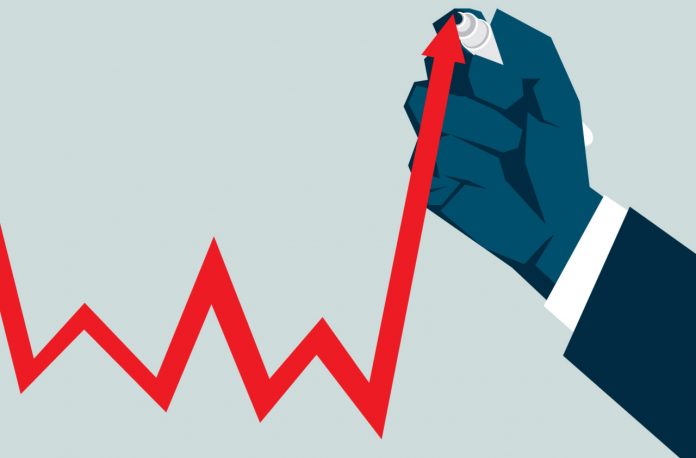ISLAMABAD: The prices of essential food items across the country increased in July following a drop in production and an increase in petroleum prices.
The Consumer Price Index (CPI) based monthly inflation increased to 9.3 per cent on an Year-on-Year (YoY) basis in July 2020, from 8.6 per cent during June 2020, according to data released by Pakistan Bureau of Statistics (PBS) on Monday.
The outbreak of the Covid-19 pandemic has weakened consumer demand putting downward pressure on commodity prices. However, risks of supply disruptions and the lower production of sugar and wheat has contributed towards an increase in food inflation in the last few months.
Additionally, the government has increased prices of petroleum products substantially, causing an increase in non-food inflation.
Food inflation currently stands in double-digits and posted an increase in July 2020. In urban areas, it rose by 15.1 per cent in July on an YoY basis and 3 per cent on a MoM basis.
Similarly, food inflation in rural areas rose by 17.8 per cent in July 2020 on an YoY basis and 4 per cent on a MoM basis.
According to PBS, inflation based on the CPI moved upwards in the first month of the new fiscal year mainly because of a hefty increase in the domestic prices of petroleum products followed by the rise in prices of wheat, vegetables and other eatables. In July 2019, the price levels rose by 8.4 per cent.
As per the PBS data, price of wheat went up by 28.5 per cent in July 2020 compared to June 2020. Similarly, the price of wheat flour increased by 18.5 per cent and the price of wheat products increased by 16 per cent compared to June 2020.
An increase of 17 per cent was also noted in the retail price of sugar across the country during the month under review.
The average CPI inflation between July-June FY20 rose to 10.74 per cent, which is the highest since fiscal year 2011-12 when it stood at 11.01 per cent.
In urban areas, food items which saw an increase in their prices in July include tomatoes (179.19pc), vegetables (23.84 per cent), onions (16.61 per cent), eggs (10.82 per cent), spices (7.57 per cent), wheat (7.42 per cent), potatoes (4.58 per cent), meat (3.97 per cent), sugar (3.82 per cent), beans (3.07 per cent), chicken (2.6 per cent), milk products (1.74 per cent) and milk (1.37 per cent).
The items whose prices declined in urban areas include pulse moong (10.72 per cent), pulse masoor (6.27 per cent), fruits (6.24 per cent), pulse mash (2.71 per cent), gram whole (2.7 per cent), pulse gram (2.39 per cent), wheat flour (1.51 per cent) and cooking oil (1.34 per cent).
In rural areas, price increase was seen in the prices of tomatoes (241.4 per cent), onions (25.57 per cent), vegetables (21.63 per cent), eggs (13.84 per cent), wheat (10.84 per cent), potatoes (5.33 per cent), sugar (3.67 per cent), rice (2.96 per cent), chicken (2.58 per cent), honey (2.06 per cent), meat (1.82 per cent), bakery and confectionary (1.74 per cent), wheat flour (1.73 per cent), readymade food (1.72 per cent), condiments and spices (1.48 per cent), beans (1.47 per cent), and fresh milk (1.23 per cent).
On the other hand, reduction in price levels were recorded in price of pulse moong (13.42 per cent), fresh fruits (6.62 per cent), pulse gram (4.98 per cent), besan (4.42 per cent), pulse masoor (4.06 per cent), pulse mash (4.04 per cent), and whole gram (4 per cent).
Non-food inflation in urban centers was recorded at 3.9 per cent on a YoY basis, while it edged up by 1.7 per cent on a MoM basis. Non-food inflation in rural areas rose by 6.3 per cent and 2 per cent, respectively.
The increase in non-food inflation is mainly driven by a hefty rise in oil prices in July.
The urban consumer price index covers 35 cities and 356 items, while the rural consumer price index tracks 27 centers and 244 items. The former grew by 7.8 per cent YoY in July, whereas the latter jumped by 11.5 per cent.
Moreover, core inflation rate in urban areas was recorded at 5.3 per cent in July compared to 6.5 per cent in June. Core inflation rate in rural areas was recorded at 7.6 per cent in July, compared to 8.8 per cent in June.
The Sensitive Price Indicator (SPI) inflation on YoY basis increased by 13.5 per cent in July as compared to an increase of 11.5 per cent a month earlier and an increase of 8.9 per cent in July 2019.
On MoM basis, it increased by 2.8 per cent in July 2020 as compared to an increase of 1.4 per cent a month earlier and an increase of 1 per cent in July 2019.
The Wholesale Price Index (WPI) based inflation on YoY basis increased by 3.2 per cent in July 2020 as compared to an increase of 0.9 per cent a month earlier and an increase of 13.3 per cent in July 2019.
The State Bank of Pakistan (SBP) determines the key policy rate, which currently stands at 7 per cent, based on the core inflation rate. The SBP has reduced the policy rate by a cumulative 625 basis points since March 17 to combat uncertainty amid the growing coronavirus outbreak.




